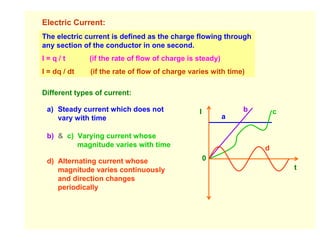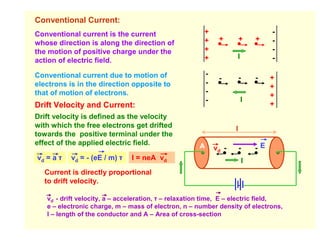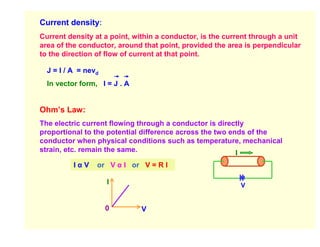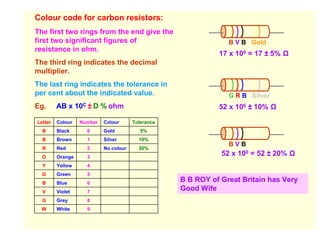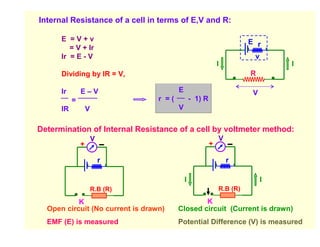1. Kirchhoff's laws describe the conservation of electric charge and energy in electrical circuits. The junction rule states the algebraic sum of currents at any junction is zero, and the loop rule states the algebraic sum of potential differences around any closed loop is zero.
2. The Wheatstone bridge circuit balances when the ratio of the arms is equal to the ratio of the potential drops, allowing the measurement of an unknown resistance.
3. A potentiometer can precisely measure voltage by balancing the unknown voltage from a cell against the potential difference along a known length of a uniform wire carrying a constant current. This allows direct comparison of electrode potentials.

